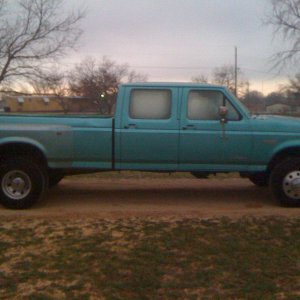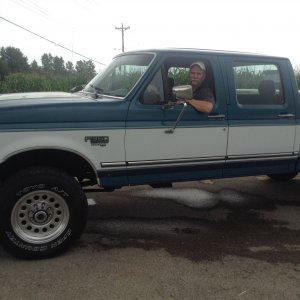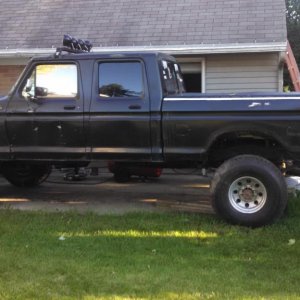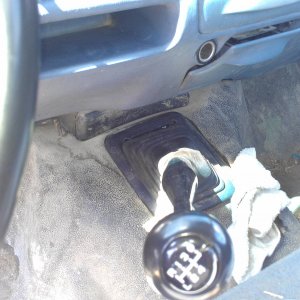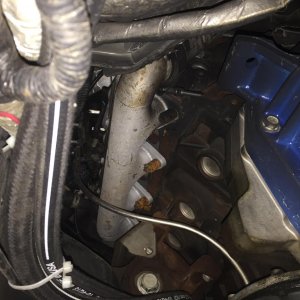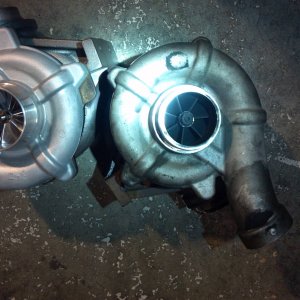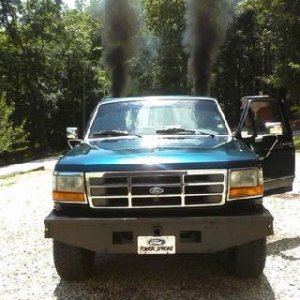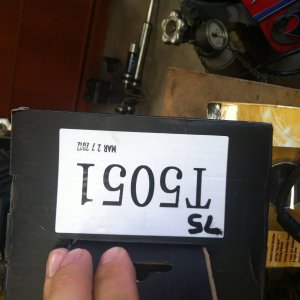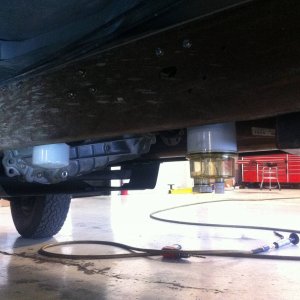You are using an out of date browser. It may not display this or other websites correctly.
You should upgrade or use an alternative browser.
You should upgrade or use an alternative browser.
American made up-pipes?
- Thread starter BrewTown
- Start date
tomlin
Member
Again, how about some unbiased data instead of a journal bearing being better? The design of the Garrett ball bearing cartridge is as close as you can get to zero friction. The cartridge bearings literally float on the oil. Garrett put the data on the table years ago when they improved upon the factory GT38 series turbo. This was real empirical data with literally millions spent or R&D. It has since proven itself time and time again with millions of miles of hard usage. Anecdotal evidence does not make something a better product. I am not saying one is better than the other, just would like to see real data before recommending a product to a customer.
BrewTown
Member
I don't have those unbiased studies, sorry. I do remember reading an article on how a journal bearing turbo can handle, for instance, a boot blowing off better than a ball bearing. It was explained that the side loading from the imbalance in pressure turbine to compressor can overcome the ball bearings strength. This typically breaks shafts also... I don't know how bearings fail specifically, but read they do. I of course am not an expert, just have done some reading. Take that for what it's worth. Oh, and all types are "floating on oil." Engines wouldn't last very long otherwise.
On oil, I also have read that with ball bearing turbos, cooling EGTs before shut down is more important. Coking of oil preventing the balls from rotating comes to mind, but I can't be sure this is the case. I also can say I don't know of 38R issues from this. Just a talking point I guess...
The point of the ball bearings has always been to reduce friction and aid in spool up. The wheels have progressed to the point that the ball bearing turbos from 10 years ago won't spool as fast or make as much power as current up to date journal bearing. For a daily or a tow rig, I would venture to say a properly sized journal bearing turbo will outperform a ball bearing with a mismatched housing all day. For instance if a .84 is optimal, and a 1.0 is installed. Speculation yes...
My understanding is this, bearings have 3 jobs. Keep the turbine centered, keep the compressor centered, and control thrust (axial shaft movement). Ball bearing turbos aren't necessarily ball bearings controlling all 3. Some only have 1, and the rest is same as a journal.
My suggestion @tomlin is to call and talk to some turbo builders. They are the ones that are seeing and dealing with failures daily. They will be a good source, and if they all are saying roughly the same things, I'd take that for truth. I do get wanting to have real evidence before putting your stamp on something to a customer.
On oil, I also have read that with ball bearing turbos, cooling EGTs before shut down is more important. Coking of oil preventing the balls from rotating comes to mind, but I can't be sure this is the case. I also can say I don't know of 38R issues from this. Just a talking point I guess...
The point of the ball bearings has always been to reduce friction and aid in spool up. The wheels have progressed to the point that the ball bearing turbos from 10 years ago won't spool as fast or make as much power as current up to date journal bearing. For a daily or a tow rig, I would venture to say a properly sized journal bearing turbo will outperform a ball bearing with a mismatched housing all day. For instance if a .84 is optimal, and a 1.0 is installed. Speculation yes...
My understanding is this, bearings have 3 jobs. Keep the turbine centered, keep the compressor centered, and control thrust (axial shaft movement). Ball bearing turbos aren't necessarily ball bearings controlling all 3. Some only have 1, and the rest is same as a journal.
My suggestion @tomlin is to call and talk to some turbo builders. They are the ones that are seeing and dealing with failures daily. They will be a good source, and if they all are saying roughly the same things, I'd take that for truth. I do get wanting to have real evidence before putting your stamp on something to a customer.
When you compare two turbos do it with the same housing, wheels, etc and only have one variable the bearing type. Stupid to say a newer design turbos will out perform older design with bigger turbine housings.
I believe journal bearings are strong but actual data compared to do it’s ball bearing counterpart would be interesting.
I agree talk to a turbo builder but not one that just does light duty turbos, but one like Pius @bell turbo who has been around building turbos for 40+ yrs. OTR, medium duty, tractor pullers and daily drivers. There was a reason wide open performance/H&S used him with huge success. Also when they built Mike O compounds or the triple turbo Cummins based off his turbos. He also used journal bearings but is it a better design or a cheaper adequate for the purpose
I believe journal bearings are strong but actual data compared to do it’s ball bearing counterpart would be interesting.
I agree talk to a turbo builder but not one that just does light duty turbos, but one like Pius @bell turbo who has been around building turbos for 40+ yrs. OTR, medium duty, tractor pullers and daily drivers. There was a reason wide open performance/H&S used him with huge success. Also when they built Mike O compounds or the triple turbo Cummins based off his turbos. He also used journal bearings but is it a better design or a cheaper adequate for the purpose
BrewTown
Member
When you compare two turbos do it with the same housing, wheels, etc and only have one variable the bearing type. Stupid to say a newer design turbos will out perform older design with bigger turbine housings
The purpose of that was to say sizing is more important than bearing selection. Thanks though, as that may have been lost in how I stated it.
I don't think you necessarily need a bunch of guys with 40 years of experience, but multiple opinions. Absolutely he is a fantastic resource! Being in business offering turbos, I'd be contacting potential partners to offer their products. Assuming that's what's happening.
Does anyone know if any factory turbos are ball bearing? Class 8, medium duty, eco-boost? With how competitive oems are, cafe standards, emissions etc... I'd assume if BB was the way to go, they would. Remember, they have to warranty them.
lincolnlocker
Well-known member
Why are we on turbos in an up pipe thread? Lol..
Plenty other spots for this. I would bet money if the shaft on a 38r was as big as any of the journal bearing counterparts and wheels where matched, hands down would be the ultimate setup.
live life full throttle
Plenty other spots for this. I would bet money if the shaft on a 38r was as big as any of the journal bearing counterparts and wheels where matched, hands down would be the ultimate setup.
live life full throttle
So shit. Mine are cracked. Purchased and installed in 2011 so I'm not that mad... I might find a shop to weld them... Anybody have any other experience with what's on the market currently?Diesel innovations.
I've had my 38r and up pipes for 8 years. No issues
@Powerstroke Racer
Your guys' up pipes were stainless correct? The welder is asking what kind of metal they are.
Your guys' up pipes were stainless correct? The welder is asking what kind of metal they are.
Powerstroke Racer
Well-known member
yes sir they were SS@Powerstroke Racer
Your guys' up pipes were stainless correct? The welder is asking what kind of metal they are.

